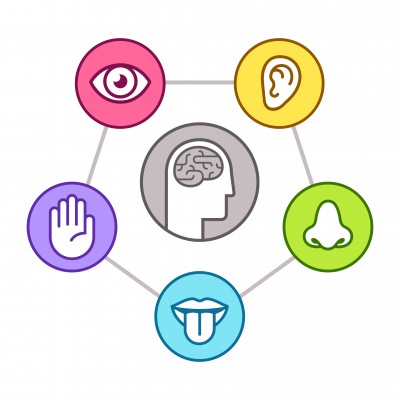The brain is like a filter that filters out all the unwanted information coming through our senses. Smells, sounds, sights, tastes and things we touch all send information to the brain about the world around us. Often, when we have a brain that is either damaged or not functioning 100% the way it should, these filters can be broken. I am so glad that I damaged my brain well and truly after leaving school, because back in the early noughties I don’t know if it was something that our school was equipped for.
A few different sounds and smells in the air can set off a chain reaction causing a sensory overload. A sensory overload occurs when the brain receives too much sensory input and cannot process it effectively, leading to anxiety, stress, and difficulty focusing. This is one of the easiest ways to disengage students from any classroom, but there are things that you can do to minimise the impact. Here are 5 things that teachers can do to help students combat sensory overload.
- Create a Sensory-Friendly Classroom Environment
One of the most important things teachers can do to help students with sensory overload is to create a sensory-friendly classroom environment. This means paying attention to the lighting, noise levels, and layout of the classroom. For example, you can provide students with noise-cancelling headphones to block out background noise or allow students to take breaks in a quiet space when they feel overwhelmed. If there is excessive noise outside the classroom, you may even consider changing classrooms completely. - Use Multi-Sensory Learning Techniques
Using multi-sensory learning techniques can also be helpful for students with sensory overload. These techniques involve engaging multiple senses, such as sight, sound, touch, and movement, to help students learn and process information. For example, you can use visual aids, hands-on activities, and movement breaks to keep students engaged and focused. - Provide Clear Instructions and Expectations
Clear instructions and expectations can also be helpful for students with sensory overload. This means breaking down tasks into small, manageable steps and providing visual cues to help students understand what is expected of them. You can also provide written instructions or use video tutorials to help students understand complex concepts. If I am going through a sensory overload episode, knowing what I’m doing is very important. It means all I have to focus on is the end goal and put one foot in front of the other until I get there. - Use Positive Reinforcement
Positive reinforcement is a powerful tool for motivating students with sensory overload. This involves rewarding students for positive behaviors, such as staying on task or participating in class discussions. You can use a variety of rewards, such as stickers, extra recess time, or small treats, to encourage students to stay focused and engaged. - Collaborate with Parents and Other Professionals
Collaborating with parents and other professionals, such as occupational therapists or speech-language pathologists, can also be helpful for students with sensory overload. This allows you to share information about the student's needs and develop a coordinated plan to support their learning and development.
By implementing these strategies, teachers can help students with sensory overload learn and thrive in the classroom environment. While these strategies may require additional effort and planning, they can significantly impact the success of students experiencing sensory overload. Remember, this may not always be diagnosed, and it may be invisible to the naked eye.
References:
- Ben-Sasson, A., Cermak, S. A., Orsmond, G. I., Tager-Flusberg, H., Kadlec, M. B., & Carter, A. S. (2008). Sensory clusters of toddlers with autism spectrum disorders: Differences in affective symptoms. Journal of Child Psychology and Psychiatry, 49(8), 817-825.
- Boyd, B. A., Baranek, G. T., Sideris, J., Poe, M. D., Watson, L. R., & Patten, E. (2010). Sensory features and repetitive behaviors in children with autism and developmental delays. Autism Research, 3(2), 78-87.
- Smith, L. B., & Gasser, M. (2005). The development of embodied cognition: Six lessons from babies. Artificial life, 11(1-2), 13-30.
- Dunn, W. (2001). The sensations of everyday life: Empirical, theoretical, and pragmatic considerations. American Journal of Occupational Therapy, 55(6), 608-620.





